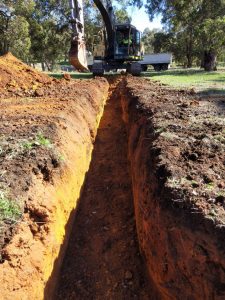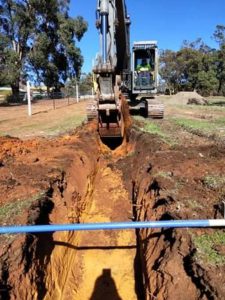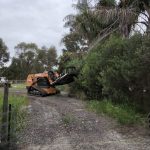Building a firebreak is one way you can protect your property from bushfire, especially if you live in a rural-urban area, a farm, near a forest or reserve or if your property is surrounded by vegetation. Based on where you live and the size of your property there are different rules regarding your firebreaks.
A firebreak or a fireguard is a piece of land that surrounds or lines your property that is free from flammable materials such as trees, grass, or bushes. It helps by slowing down spreading fires or preventing a fire from reaching your property. Since a firebreak is clear from any obstruction, it also allows fire trucks and personnel to quickly gain access to your property.
How are Firebreaks Created?
Building a firebreak usually requires the use of a slasher or cutter. A slasher is a type of land clearing equipment that attaches to a loader, excavator, or skid steer. It can quickly slash and clear grass, weeds, and low-level bushes. Besides machinery, firebreaks, especially if the area is small, may also be constructed using hand tools such as axes, hoes, and machetes. Some also use chemicals to remove vegetation.
For firebreaks to be efficient in stopping or slowing down spreading bushfires, they should be in the right width. The width of the firebreak depends on the location and the type of surrounding fuel or vegetation.
Types of Firebreaks
Below are common types of firebreaks.
Natural firebreaks
Bluffs and canyons or bodies of water like creeks, lakes, and streams make natural firebreaks. To make sure fire does not cross over the firebreak, there should be no vegetation or combustible material that can ignite. The firebreak must also be wide enough to prevent fire from spreading quickly.
Existing firebreaks
Pasture roads, gravel roads, and cultivated fields are examples of existing firebreaks. Paved roads are also good firebreaks because they allow vehicles like fire trucks to pass through in case of fire.
Mowed and Wet Lines
Mowed and wet lines go together to make an efficient barrier against spreading fire. Mowed lines reduce the intensity of fire, whilst wet lines serve as the barrier that prevents fire from crossing over.
Constructed firebreaks
Constructed firebreaks that a bulldozer has scraped are considered the most efficient especially if done properly. Ideally, existing crops or vegetation must be removed to expose the bare mineral soil without disturbing much of the ground to prevent erosion.
Firebreak maintenance is as important as building them. To ensure that firebreaks continuously reduce the risk of bushfire, they must be mowed, grazed, or ploughed regularly. They should be cleared from combustible materials that wood, twigs and fallen leaves. Trees near the firebreak should also be pruned to prevent ground fires from burning the tree crowns.
Firebreaks Protect Your Property and Save the Lives of Your Loved Ones
Dobson Excavations offer a wide range of earthmoving services, including firebreak construction and maintenance, in Perth and metro and rural West Australia.
Contact us here for an obligation-free quote …



